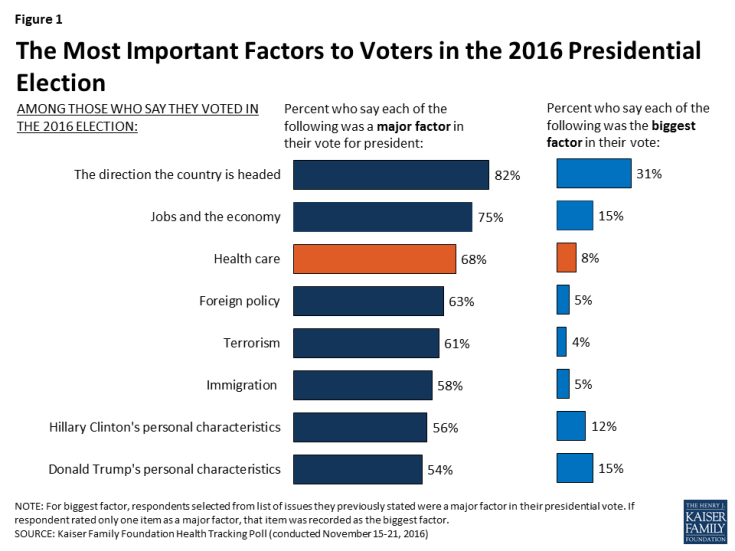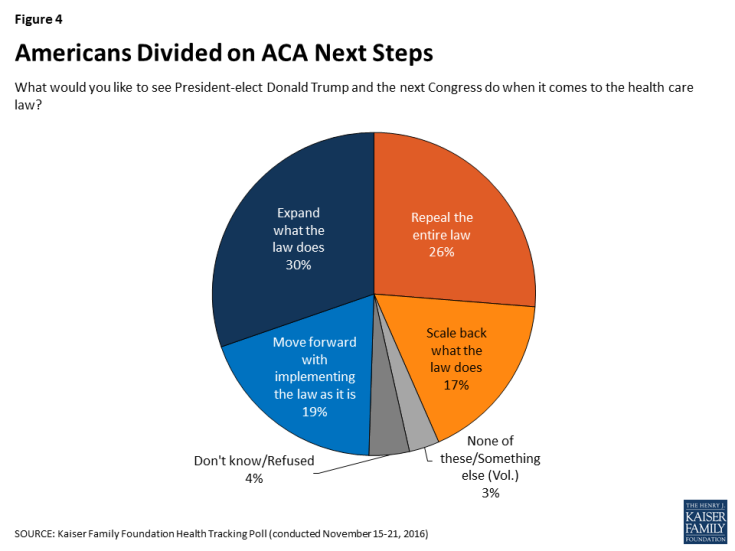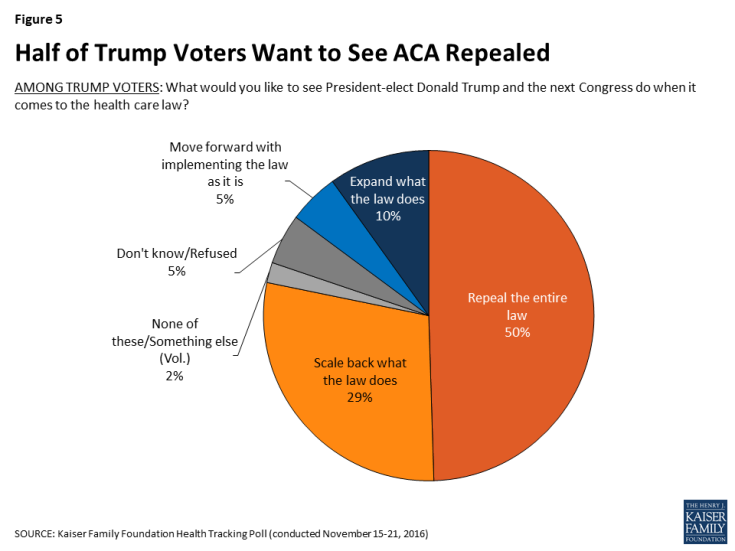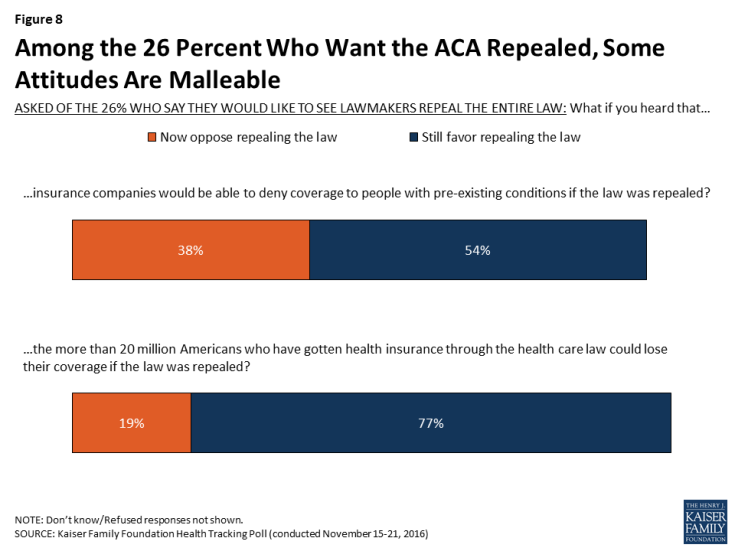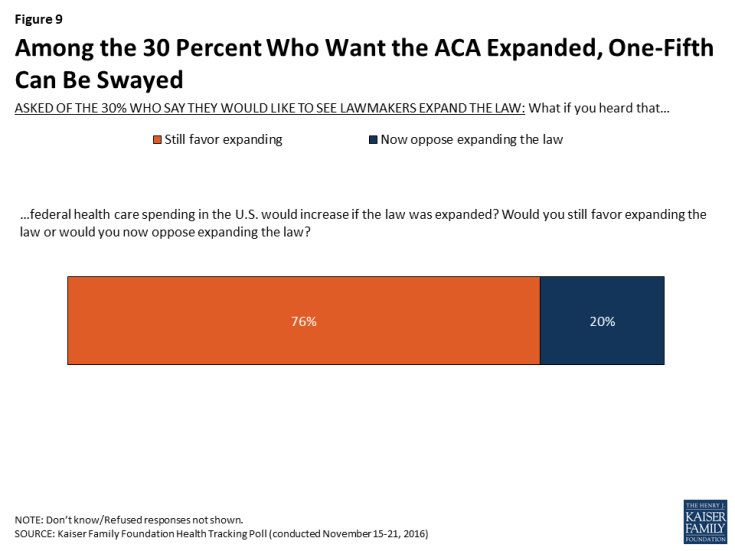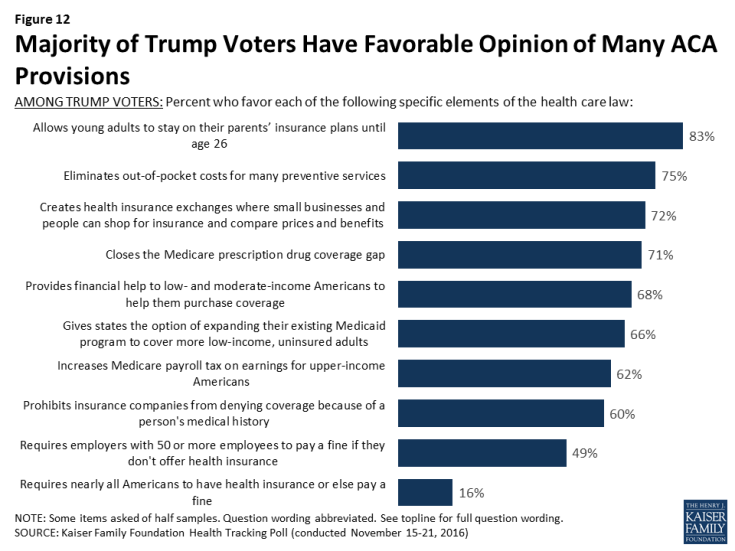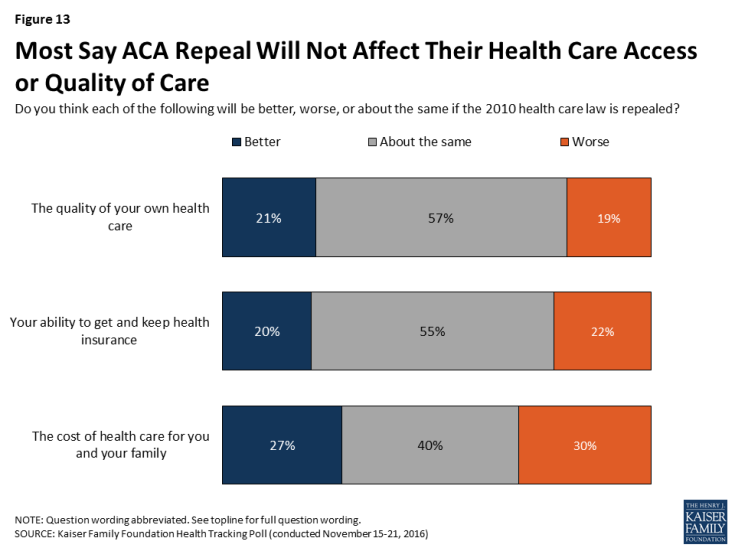Kaiser Health Tracking Poll: November 2016
KEY FINDINGS:
- The November Kaiser Health Tracking Poll, conducted one week after the 2016 presidential election, finds health care played a limited role in voters’ 2016 election decisions, with larger shares of voters saying the biggest factor in their vote was the direction of the country (31 percent), Donald Trump’s personal characteristics (15 percent), jobs and the economy (15 percent), or Hillary Clinton’s personal characteristics (12 percent), than who say the same about health care (8 percent).
- While health care was not a leading factor in voters’ presidential decisions, President-elect Trump and Republican lawmakers have made it clear that one of their top priorities is the repeal of the 2010 health care law. Americans are divided on what they want to see lawmakers do to the ACA with one-fourth of Americans (26 percent) wanting to see President-elect Donald Trump and the next Congress repeal the entire law while an additional 17 percent want them to scale back what the law does. This is compared to 30 percent of the public who want to see the law expanded and 19 percent who want to see lawmakers move forward with implementing the law as it is. Among Trump voters, 50 percent want to see the law repealed and 29 percent want to see it scaled back.
- While President-elect Trump and Republican members of Congress work on a replacement to the ACA, this month’s survey finds that many of the law’s major provisions continue to be quite popular, even across party lines. The notable exception is the requirement that nearly all Americans have health insurance or else pay a fine.
- Among Trump voters, 52 percent say the cost of their health care will get better, 39 percent say the quality of their health care will get better, and 35 percent say their ability to get and keep health insurance will get better if the 2010 health care law is repealed. In general, the majority of Trump voters say President-elect Trump’s health care policies will be good for the country as a whole (71 percent) and good for them and their families (59 percent).
Health Care in the 2016 Election
Many factors were important to voters’ choices in the 2016 presidential election, with over two-thirds of voters stating that the direction the country is headed (82 percent), jobs and economy (75 percent), and health care (68 percent) were a “major factor” in their vote. Majorities also cite foreign policy (63 percent), terrorism (61 percent), immigration (58 percent), and candidates’ personal characteristics (56 percent for Clinton’s and 54 percent for Trump’s) as “major factors.” When voters are asked to select the “biggest factor” in their vote for president, the direction of the country (31 percent), Donald Trump’s personal characteristics (15 percent), jobs and the economy (15 percent), and Hillary Clinton’s personal characteristics (12 percent) rank above health care (8 percent).
Biggest Factor for Trump Voters and Clinton Voters
Among voters who supported Republican nominee Donald Trump, four in ten (38 percent) say the direction the country is headed was the “biggest factor” in their vote while about one-third of Clinton voters say Trump’s personal characteristics was the “biggest factor.” For both Trump and Clinton voters, it appears health care is a second-tier issue, with about one in ten saying it was the “biggest factor” (7 percent and 10 percent, respectively).
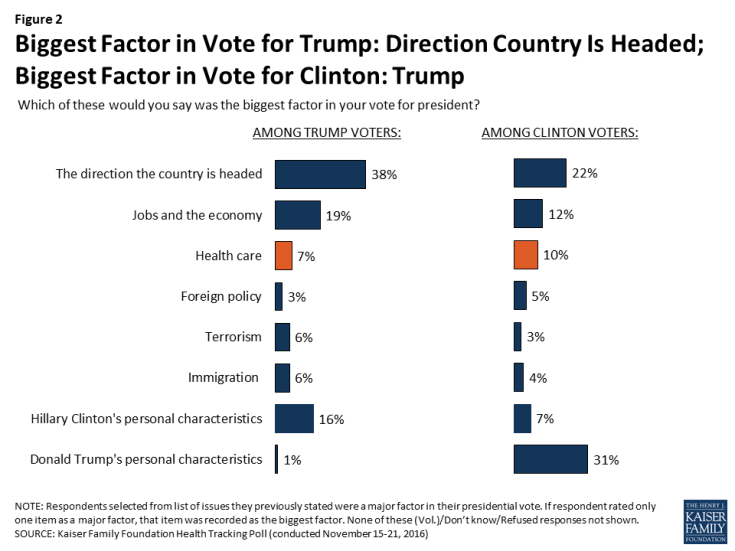
Figure 2: Biggest Factor in Vote for Trump: Direction Country Is Headed; Biggest Factor in Vote for Clinton: Trump
President-elect Trump and Health Care
While health care was not a leading factor in voters’ decisions in the 2016 presidential election, President-elect Trump and Republican lawmakers in Congress have said they would like to move quickly in 2017 on several health care issues – including most notably, the repeal and replacement of the Affordable Care Act.
The November survey, conducted after the 2016 election, finds overall public opinion towards the 2010 health care law is stable from previous months, with similar shares of the public saying they have an unfavorable opinion (45 percent) as say they have a favorable opinion (43 percent) of the law.
Repealing the Affordable Care Act
During the past six years, Republican lawmakers in Congress have voted to repeal parts or all of the 2010 health care law more than fifty times1, only to have efforts blocked by either Democrats or President Obama. Now, with Republicans controlling both the executive branch and Congress, lawmakers have reaffirmed their commitment to repealing the Affordable Care Act. One-fourth (26 percent) of Americans want to see President-elect Trump and Congress repeal the entire law, and an additional 17 percent want them to scale back what the law does. This is compared to 30 percent of the public who want to see the law expanded and 19 percent who want to see lawmakers move forward with implementing the law as it is.
Vast Majority of Trump Voters Have Unfavorable Views of ACA, Half Want Law Repealed
Focusing specifically on voters who supported Republican nominee Donald Trump, the majority have an unfavorable view of the health care law with 63 percent having a “very unfavorable” opinion and an additional 18 percent having a “somewhat unfavorable” opinion. This is compared to 79 percent of Clinton voters who have a favorable view of the law (40 percent have a “very favorable” and 39 percent have a “somewhat favorable” view).
| Table 1: Voters’ Attitudes Towards the ACA | |||
| As you may know, a health reform bill was signed into law in 2010. Given what you know about the health reform law, do you have a generally favorable or generally unfavorable opinion of it? | All voters | Trump voters | Clinton voters |
| Favorable (NET) | 45% | 15% | 79% |
| Very favorable | 20 | 5 | 40 |
| Somewhat favorable | 25 | 10 | 39 |
| Unfavorable (NET) | 50 | 81 | 18 |
| Very unfavorable | 33 | 63 | 5 |
| Somewhat unfavorable | 17 | 18 | 13 |
| Don’t know/Refused | 5 | 4 | 4 |
In addition, half of Trump voters want to see the law repealed, three in ten (29 percent) want President-elect Trump and the next Congress to scale back what the law does, 5 percent want lawmakers to move forward with implementing the law as it is, and one in ten want them to expand what the law does.
Republicans May Be Shifting Attitudes on ACA from Repeal to Scale Back
The November Kaiser Health Tracking Poll finds a slight uptick in the share of Americans who want lawmakers to scale back the law (17 percent compared to 9 percent last month) as well as a decrease in the share who want lawmakers to repeal the entire law (26 percent compared to 32 percent in October).
The shift in attitudes is largely driven by Republicans, with about half (52 percent) of Republicans saying they want the ACA to be repealed this month, down from 69 percent in October. At the same time, there was a corresponding increase in the share of Republicans who want lawmakers to scale back what the law does, from 11 percent to 24 percent.
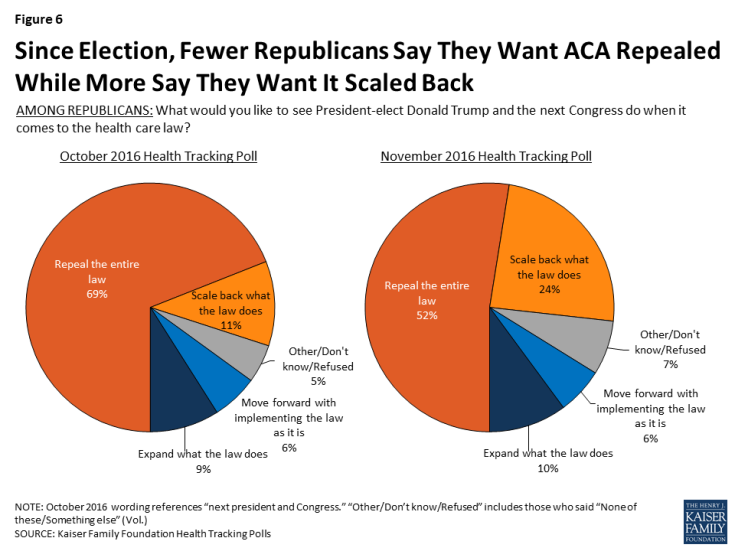
Figure 6: Since Election, Fewer Republicans Say They Want ACA Repealed While More Say They Want It Scaled Back
Republican-Sponsored Alternative to the ACA
Republican members of Congress, including House Speaker Paul Ryan, have suggested alternative health reform plans to the ACA. Among those who want to see the ACA repealed (26 percent of total population), 31 percent want to see the health care law just repealed and not replaced. Two-thirds want lawmakers to repeal the health care law and replace it with a Republican-sponsored alternative, including 42 percent who want lawmakers to wait to repeal until the details of a replacement plan have been figured out and 21 percent who want them to repeal the law immediately and figure out a replacement plan later.
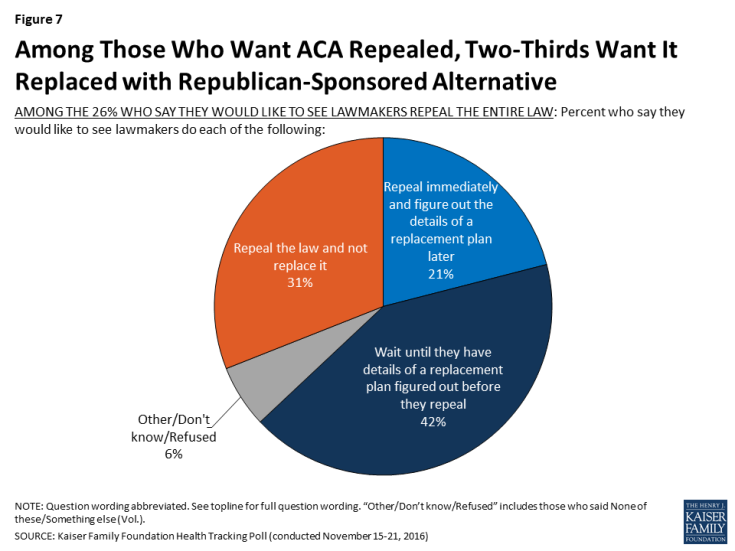
Figure 7: Among Those Who Want ACA Repealed, Two-Thirds Want It Replaced with Republican-Sponsored Alternative
These results are similar among Trump voters who want lawmakers to repeal the law, with about two-thirds wanting lawmakers to repeal the health care law and replace it with a Republican-sponsored alternative.
Among Those Who Want to See ACA Expanded or Repealed, Some Attitudes Are Malleable
Among Americans who have the most polarized attitudes towards the ACA – those who want to see it expanded or repealed – some attitudes can be swayed after hearing arguments for or against repeal or expansion of the law. Among those who want to see the ACA repealed, 38 percent (meaning 10 percent of the public overall) change their opinion after hearing the argument made by proponents that repealing the ACA would mean that insurance companies would be able to deny coverage to people with pre-existing conditions. A slightly smaller share (19 percent of those who wanted to see the law repealed, 5 percent, overall) change their opinion after hearing that more than 20 million Americans who have gotten health insurance through the health care law could lose their coverage if the law was repealed. Trump voters react similarly, with a larger share changing their opinion after hearing that repealing the ACA would mean that insurance companies would be able to deny coverage to people with pre-existing conditions (27 percent) than changing their opinion after hearing that more than 20 million Americans could lose their coverage (8 percent).
On the other hand, among those who want to see the ACA expanded, one-fifth change their opinion after hearing that federal health care spending in the U.S. would increase if the law was expanded (6 percent, overall).
Americans Have Favorable Attitudes towards Some ACA Provisions
While President-elect Trump and Republican members of Congress make efforts to repeal the ACA, many of the law’s major provisions continue to be quite popular, even across party lines.
| Table 2: Americans’ Opinions of ACA Provisions | ||||
| Percent who say they have a FAVORABLE opinion of each of the following provisions of the law: | Total | Democrats | Independents | Republicans |
| Allows young adults to stay on their parents’ insurance plans until age 26 | 85% | 90% | 85% | 82% |
| Eliminates out-of-pocket costs for many preventive services | 83 | 89 | 83 | 77 |
| Closes the Medicare prescription drug “doughnut hole” so people on Medicare will no longer be required to pay the full cost of their medications | 81 | 86 | 89 | 69 |
| Creates health insurance exchanges where small businesses and people can shop for insurance and compare prices and benefits | 80 | 90 | 80 | 72 |
| Provides financial help to low- and moderate-income Americans who don’t get insurance through their jobs to help them purchase coverage | 80 | 91 | 81 | 67 |
| Gives states the option of expanding their existing Medicaid program to cover more low-income, uninsured adults | 80 | 90 | 79 | 67 |
| Prohibits insurance companies from denying coverage because of a person’s medical history | 69 | 75 | 65 | 63 |
| Increases the Medicare payroll tax on earnings for upper-income Americans | 69 | 82 | 63 | 63 |
| Requires employers with 50 or more employees to pay a fine if they don’t offer health insurance | 60 | 83 | 60 | 45 |
| Requires nearly all Americans to have health insurance or else pay a fine | 35 | 57 | 30 | 21 |
| Note: Some items asked of half samples. Question wording abbreviated. See topline for full question wording. | ||||
For example, large shares of Americans – including at least eight in ten overall and at least eight in ten Democrats, Republicans, and independents – have a favorable view of the fact that the law allows young adults to stay on their parents’ insurance plans up to age 26.
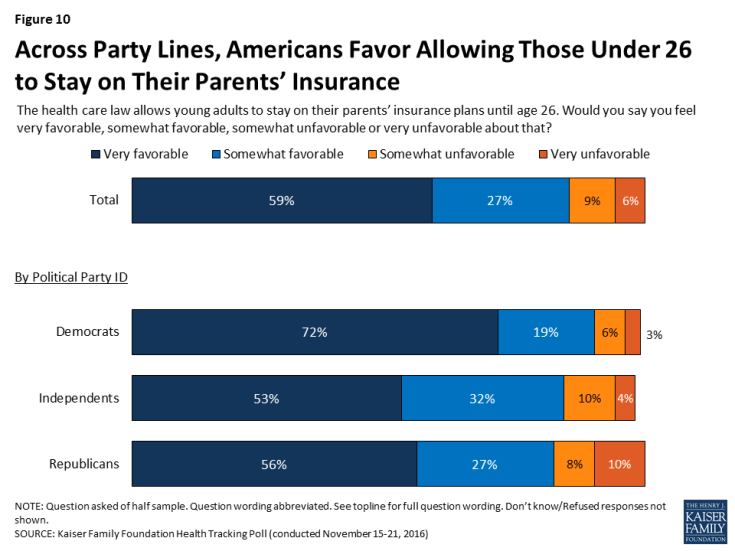
Figure 10: Across Party Lines, Americans Favor Allowing Those Under 26 to Stay on Their Parents’ Insurance
In addition, at least seven in ten Democrats, Republicans, and independents have a favorable view of the provisions that eliminate out-of-pocket costs for preventive services and create health insurance exchanges or marketplaces where small businesses and people who don’t get coverage through their employers can shop for insurance and compare prices and benefits.
Other provisions of the ACA including those that close the Medicare “doughnut hole” for prescription drug coverage, provide financial help to low- and moderate-income Americans to help them purchase coverage, and give states the option of expanding Medicaid are favored by the vast majority of Democrats and independents, and at least six in ten Republicans. Fewer, but still a majority of Democrats, Republicans, and independents, favor the fact that the law prohibits insurance companies from denying coverage based on pre-existing conditions and establishes the Medicare payroll tax on earnings for upper-income Americans.
The provision that requires employers with 50 or more employees pay a fine if they do not offer health insurance to their employees is favored by a majority of Democrats and independents (83 percent and 60 percent, respectively) but by fewer than half of Republicans (45 percent). The glaring exception to the popularity of individual provisions of the law is the requirement that nearly all Americans have health insurance or pay a fine, which is viewed unfavorably by about two-thirds of the public.
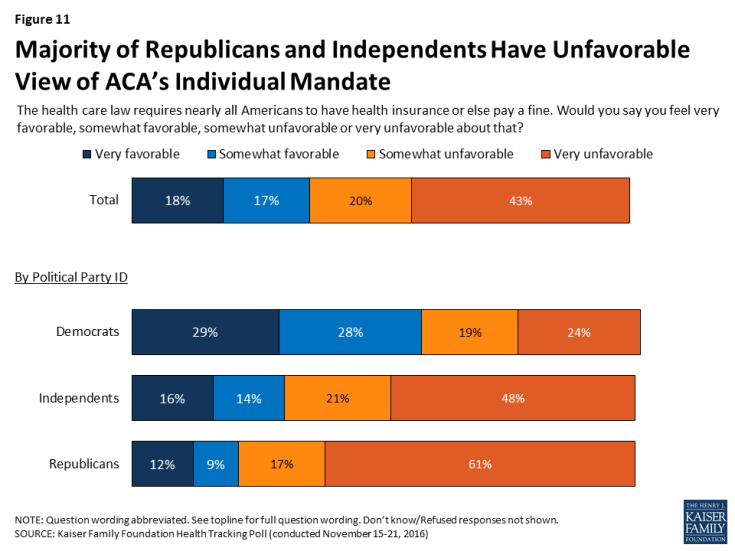
Figure 11: Majority of Republicans and Independents Have Unfavorable View of ACA’s Individual Mandate
Majority of Trump Voters Have Favorable Attitudes Towards Many ACA Provisions
Many of the ACA’s major provisions are also quite popular among Trump voters, with more than seven in ten having favorable attitudes towards the provisions that allow young adults to stay on their parents’ insurance plans up to age 26 and eliminate out-of-pockets costs for preventive services. In addition, at least two-thirds of Trump voters also favor the fact that the law creates health insurance exchanges or marketplaces where small businesses and people who don’t get coverage through their employers can shop for insurance and compare prices and benefit (72 percent), closes the Medicare prescription drug coverage gap (71 percent), provides financial help to low- and moderate-income Americans to buy health insurance (68 percent), and gives states the option of expanding Medicaid to cover more low-income, uninsured adults (66 percent).
Perceived Impact of Health Care Changes on Americans
Most Say Changes to Health Care Law Will Not Impact Them, But Some Concern For How Trump’s Health Care Policies Could Affect At-Risk Populations
When asked how a repeal of the 2010 health care law would affect the quality of and access to health care, most Americans say the quality of their own health care as well as their own ability to get and keep health insurance would stay about the same (57 percent and 55 percent, respectively). Americans are more divided on how a repeal of the ACA would affect health care costs for them and their family with 30 percent saying the cost of their health care would get worse, 27 percent saying it would get better, and 40 percent saying it would stay about the same.
Among Trump voters, 52 percent say the cost of their health care will get better, 39 percent say the quality of their health care will get better, and 35 percent say their ability to get and keep health insurance will get better if the 2010 health care law is repealed.
Some Concern That President-elect Trump’s Health Care Policies Will be Bad for Women, Uninsured, and Lower-Income Americans
A large share of Americans do not think that President-elect Trump’s health care policies will make much of a difference to many groups (wealthy Americans, men, and them and their family). The public is less positive about how other groups – including the uninsured, lower-income Americans, and women – will fare. About four in ten Americans think President-elect Trump’s health care policies will be “bad” for the uninsured (43 percent), lower-income Americans (43 percent), and women (36 percent). Attitudes are more split on how individuals with a pre-existing condition, seniors, middle-class Americans, and the country as a whole will fare, with similar shares saying Trump’s health care policies will be good, bad, or not make much of a difference to these groups.
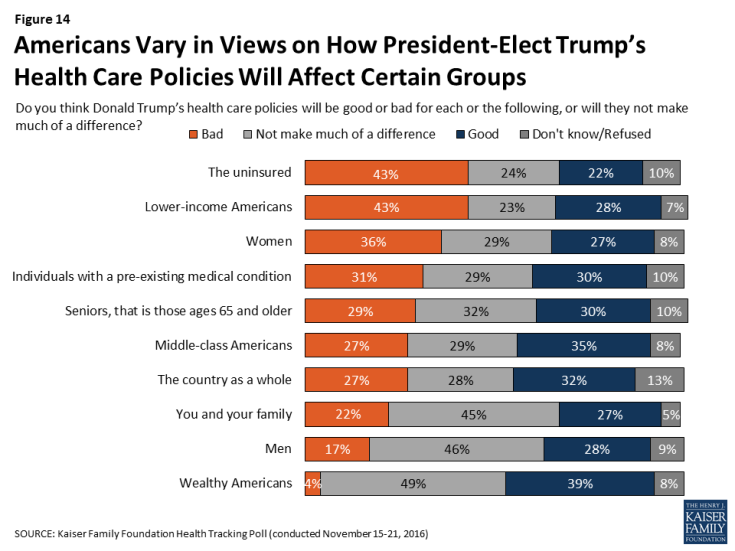
Figure 14: Americans Vary in Views on How President-Elect Trump’s Health Care Policies Will Affect Certain Groups
The majority of Trump voters say President-elect Trump’s health care policies will be good for the country as a whole (71 percent) and good for them and their families (59 percent). This is compared to 7 percent of Clinton voters who say his health care policies will be good for the country as a whole and 5 percent who say his policies will be good for them and their families.
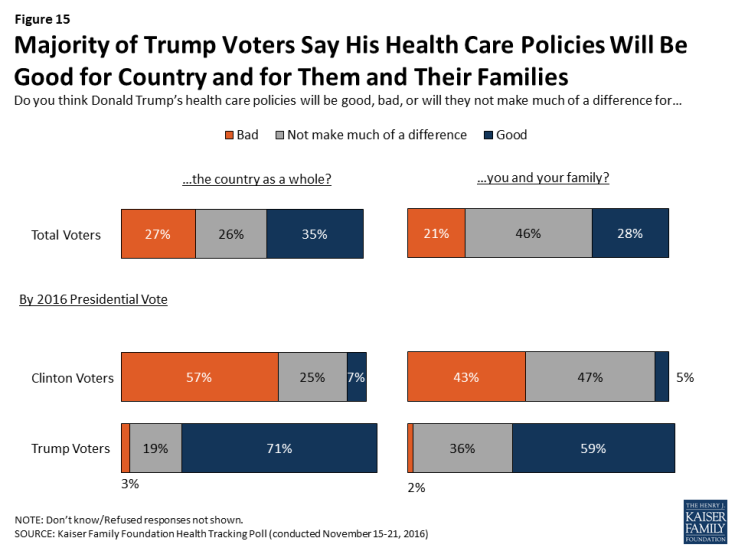
Figure 15: Majority of Trump Voters Say His Health Care Policies Will Be Good for Country and for Them and Their Families
Kaiser Health Policy News Index: November 2016
The November Kaiser Health Tracking Poll finds the Republican nominee Donald Trump’s election as the 45th president of the United States dominated the public’s attention during the past month with eight in ten Americans (82 percent) closely following news about his presidential campaign win. Other stories that captured the attention of Americans include the conflict involving ISIS in Mosul, Iraq (71 percent) and the top health policy story this month – Republican plans to repeal the ACA (70 percent). Fewer Americans report following three additional health policy stories: news about rising prescription drug costs (59 percent), reports about rising ACA health insurance premiums (55 percent), and the ACA’s fourth open enrollment period (45 percent).

